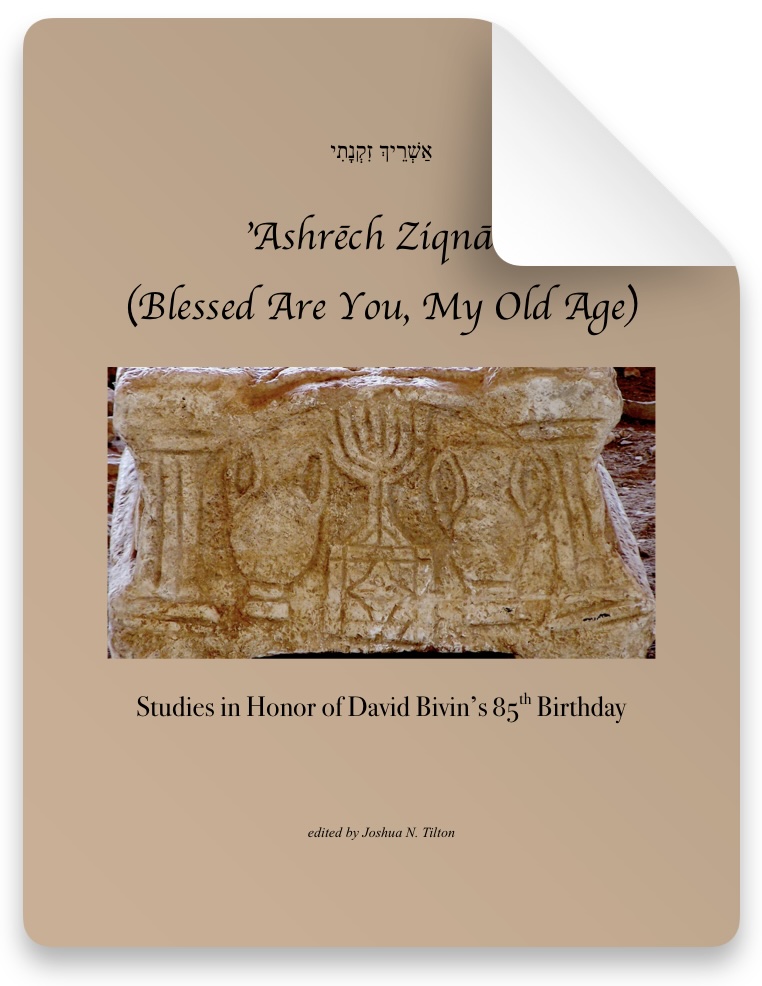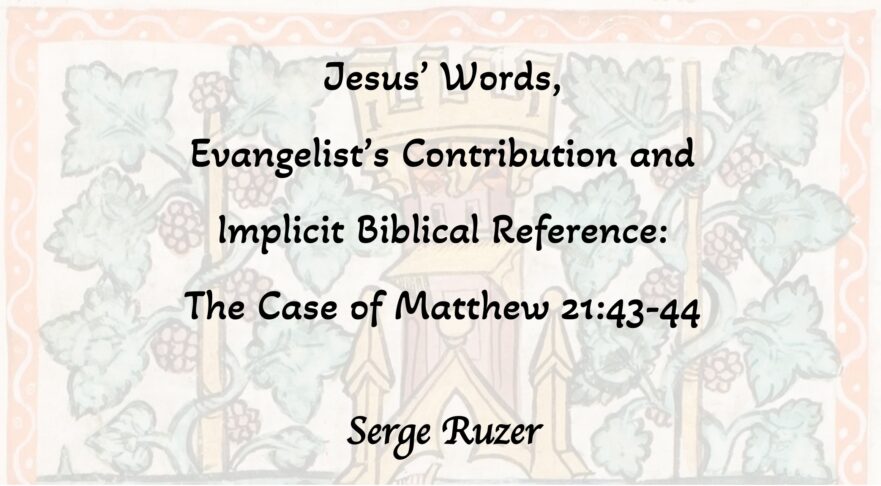How to cite this article: Serge Ruzer, “Jesus’ Words, Evangelist’s Contribution and Implicit Biblical Reference: The Case of Matthew 21:43-44,” Jerusalem Perspective (2024) [https://www.jerusalemperspective.com/28340/].
This article belongs to the collection Ashrech Ziqnati (Blessed Are You, My Old Age): Studies in Honor of David Bivin’s 85th Birthday.

It is my pleasure to participate in the volume honoring David Bivin, whose decades-long research has contributed greatly to our understanding of the developments underlying the Synoptic tradition. David’s analysis is always an example of attentiveness to the text and penchant for exactness of the solutions offered. Below, I will try to follow the former, though as for the latter, my short essay clearly does not meet the bar. However, if in the final account the definite answer eludes us, even the tentative suggestions may have some merit.
Matthean Contributions to the Parable of the Vineyard and the Tenants
The parable of the vineyard and the tenants in Matt. 21:33-46, usually seen as referring to Isa. 5:1-7, where the vineyard of the Lord imagery is explained as representing Israel,[1] has Synoptic parallels in Mark 12:1-12 and Luke 20:9-19.[2] All three versions place the parable in the context of Jesus’ cleansing the Temple and thus his conflict with the Temple establishment.[3] The evil tenants of the parable are thus obviously intended to signify the priestly leaders. It is only Matthew who cares to include Pharisees among the addressees of Jesus’ invective (Matt. 22:45): “When the chief priests and the Pharisees heard his parables, they perceived that he was speaking about them.”[4] This may be ascribed to the well-known Matthean tendency to highlight the motif of Jesus’ conflicts with Pharisees, a tendency interpreted as a sign of Matthew’s closeness to Pharisaic circles,[5] or, alternatively, a fait accompli of estrangement.[6]

This inclusion of the Pharisees in itself indicates the secondary character of Matthew’s additions to the parable of the vineyard and the tenants, but it does not end here: Matthew is the only evangelist who makes Jesus to proclaim: “Therefore I tell you, the kingdom of God (ἡ βασιλεία τοῦ Θεοῦ) will be taken away from you and given to a nation (ἔθνει) producing the fruits of it” (Matt. 21:43). One notes that the motif of the kingdom in the context of this parable is peculiar to Matthew, who appeals to it also in the preceding passage, with Jesus telling to the chief priests: “Truly, I say to you, the tax collectors and the harlots go into the kingdom of God before you” (Matt. 21:31).
Paid Content
Premium Members and Friends of JP must be logged in to access this content: Login
If you do not have a paid subscription, please consider registering as a Premium Member starting at $10/month (paid monthly) or only $5/month (paid annually): Register
One Time Purchase Rather Than Membership
Rather than purchasing a membership subscription, you may purchase access to this single page for $1.99 USD. To purchase access we strongly encourage users to first register for a free account with JP (Register), which will make the process of accessing your purchase much simpler. Once you have registered you may login and purchase access to this page at this link:
Conclusion
The backdrop Qumranic evidence combined with the likely biblical allusion, discerned in the addition to the Wicked Tenants parable (and supported by the evidence from 1 Peter), give more weight to a non-ethnic interpretation of Matthew’s editorial intent.
Additional Note: One notes that the Qumranic evidence is conspicuously lacking the kingdom motif. Would it be still reasonable to suggest that the priests at Qumran applied Exod. 19:6 to themselves and their community? While this application might be expected, I have not managed to locate in the Scrolls any explicit reference to such a perception.
- [1] See discussion in J. Blenkinsopp, Isaiah 1-39: A New Translation with Introduction and Commentary, The Anchor Bible (New York et al.: Doubleday, 2000), 206-208. ↩
- [2] Dependence on Mark is usually suggested here, see W. D. Davies and D. C. Allison, A Critical and Exegetical Commentary on the Gospel According to Saint Matthew (3 vols.; Edinburgh: T&T Clark, 1988-1997), 3:175. ↩
- [3] See, for example, M. Konradt (M. E. Boring, translator) The Gospel According to Matthew: A Commentary (Waco, Texas: Baylor University Press, 2020), 321. ↩
- [4] Cf. Luke 20:19: “The scribes and the chief priests tried to lay hands on him….” ↩
- [5] B. Repschinski, “Taking on the Elite: The Matthean Controversy Stories,” Society of Biblical Literature Seminar Papers (Atlanta: SBL Press,) 1999, 1-23; A. J. Saldarini, Matthew’s Jewish-Christian Community (Chicago: The University of Chicago Press, 1994). ↩
- [6] See A. J. Overman, Matthewʼs Gospel and Formative Judaism: The Social World of the Matthean Community (Minneapolis: Fortress Press, 1990); U. Luz, Studies in Matthew (Grand Rapids, MI: Eerdmans, 2005). ↩































































































